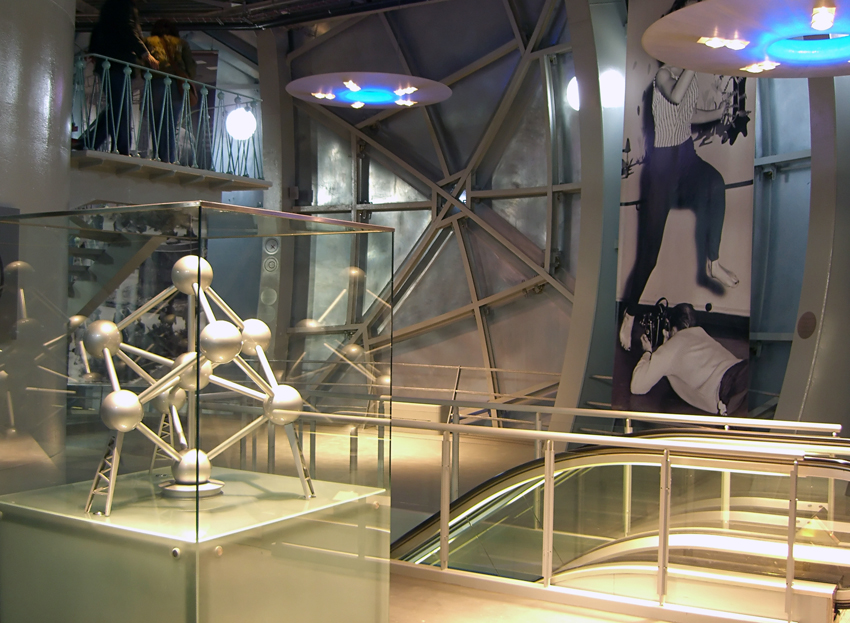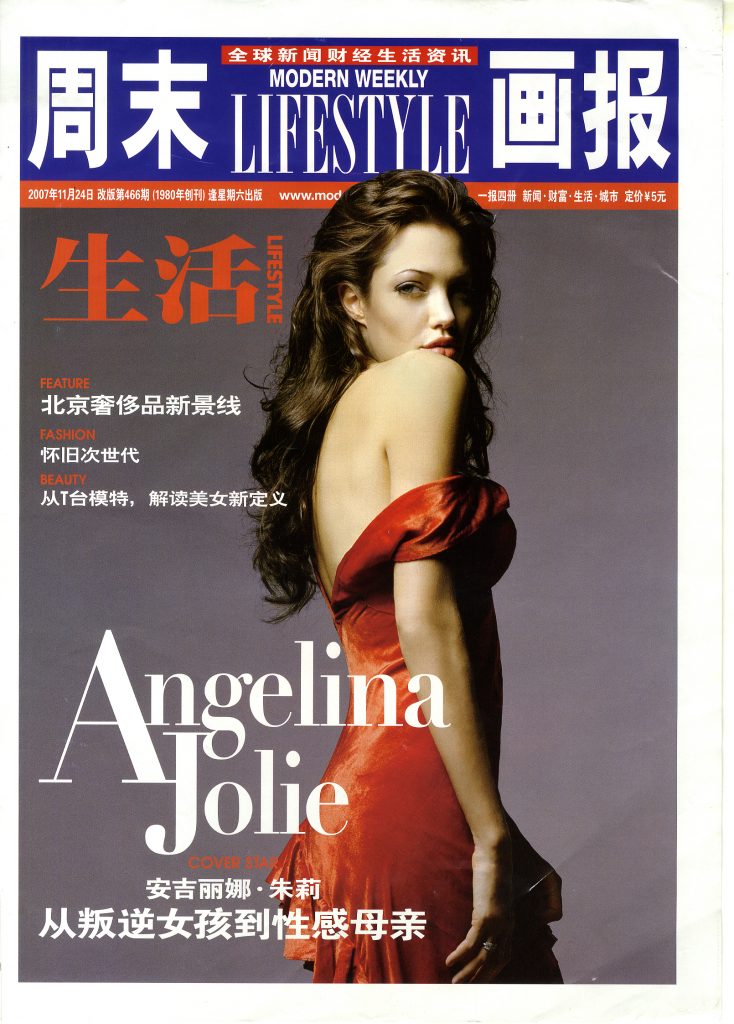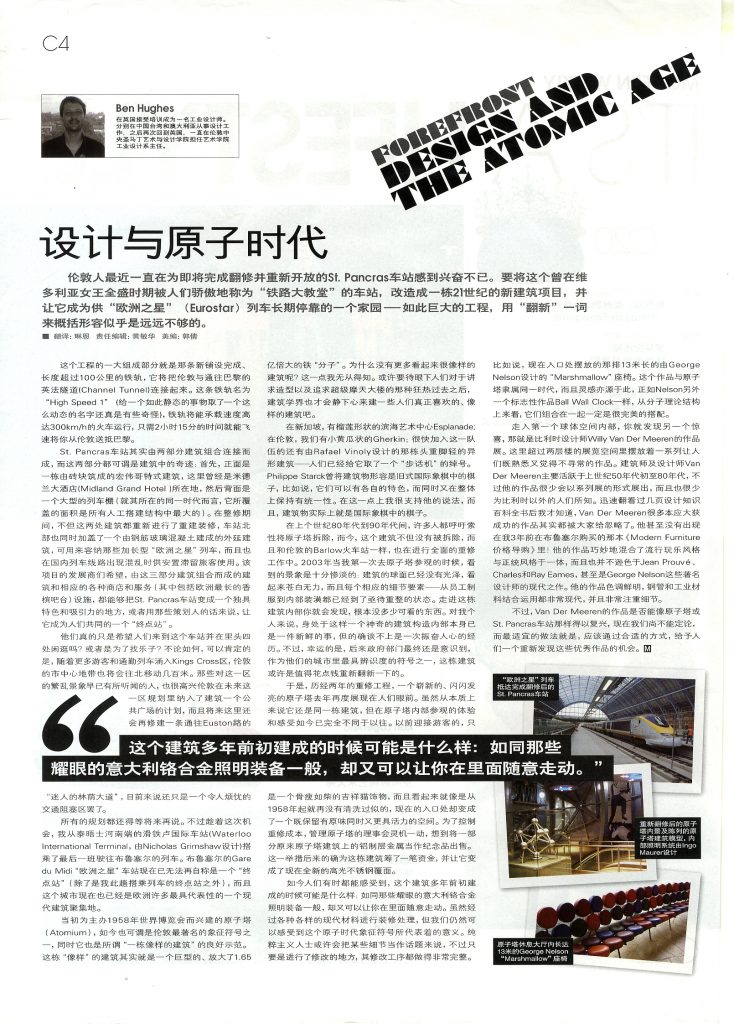
Published in November 2007, this describes some renovations to St.Pancras in London and the Atomium in Brussels. Opposing ends of a Modern dream.
Londoners have been getting excited recently over the soon-to-be-unveiled refurbishments to St Pancras station. “Refurbishments” is maybe a little light for the vast engineering project that has seen the once proud ‘Cathedral of the Railways’ (as it was described in its Victorian heyday) turned into a twenty-first century facility and new permanent home of Eurostar trains. Part of this involves a new track, named “High Speed 1” that will whisk you to Paris in just two and a quarter hours.
St Pancras is really two architectural marvels stuck together. The first is the giant trainshed at the back, and the second is the imposing gothic façade, housing the Midland Grand Hotel. During the renovations, not only have these been restored, but a glass, steel and concrete extension has been added at the back to accommodate the long Eurostar trains, as well as the dislocated domestic services. The developers are hoping that the mixture of these three architectural wonders, along with the associated shops and services (Europe’s longest Champagne bar anyone?) will be sufficient to turn it into an attraction in its own right – or ‘destination station’ in planners’ irony-free parlance. Are they really expecting people to go and hang around in a station? For fun? I can’t help thinking people are going to be happier in a nearby pub, despite the no-doubt truncated champagne bar. Either way, it will certainly shift London’s centre of gravity north by several hundred yards, as many more visitors and commuters pour into the Kings Cross area. Those familiar with the area, which has a famously poor reputation, have been amazed to discover that future plans incorporate a public square to rival the most popular in the city, and an “attractive boulevard” leading up Euston road. At the moment, this whole area consists of one large and unpleasant traffic jam.
All this is for the future. In the meantime, I took the opportunity to enjoy one last trip from the Nicholas Grimshaw- designed Waterloo International terminal over to Brussels. Now while Brussels’ Gare du Midi Eurostar terminal can’t claim to be a ‘destination station’ (other than being a the destination for my train), the city is home to one of the most striking and iconic architectural statements in Europe. Built to celebrate the city’s hosting of the 1958 World’s Fair, the Atomium is a prominent symbol of the city, and fine example of a ‘building that looks like something.’ The ‘something’ in this case is an iron molecule, blown up 165 million times. Why there aren’t more buildings that look like things, I can’t work out. Maybe after the current fad for buildings with sculpted surfaces and fluid lines, architects will get down to doing what people like best: buildings that look like things. In Singapore, they have the Esplanade, which is clearly modelled on a Durian. In London we have the Gherkin, shortly to be joined a monstrosity, already dubbed “The Walkie-Talkie.” Philippe Starck has described buildings as being like chess pieces in the past, i.e. they can have their own character, whilst still maintaining some overall unity and common dialog. But why not have buildings that are actually chess pieces? While this trend may take some time to catch on, fortunately the Belgian government saw sense. Many had called for the scrapping of the Atomium, but instead, like the Barlow trainshed back in London, it has undergone a serious makeover. This was, in fact, my second visit. During the first, back in 2002, it was looking a great deal more sad – its spheres were tarnished and dull and every element – from staff uniforms to décor were in serious need of a make-over. Once you got inside, there was very little to look at. Whilst for me being inside such a strange and magical structure was enough in itself, the authorities finally came to the realisation that, as the most recognisable icon of their city, it might be worth spending some money on it. And so, last year, it was unveiled following a two year-long restoration. Whilst it may look about the same, visiting it is a completely different experience. Where previously visitors were greeted by a scraggy cat mascot which looked as though it hadn’t been washed since 1958 [looking back — I think this must have been a rendering of popular cartoon character, Marsupilami, created by André Franquin around the same time as the Atomium], now one enters a space much more in keeping with the original sense of progress and dynamism. Today’s design world is awash with so much faux retro, it feels rather refreshing to still be able to enjoy this impressive symbol of the atomic age.
Once inside there was another surprise in the form of an exhibition by Belgian designer Willy Van Der Meeren. This designer, whose work fits well with the interior of the Atomium might be thought of as a contemporary of the likes of George Nelson, Charles and Ray Eames and Jean Prouvé. He created innovative furniture design and architecture using tubular steel, prefabricated parts and textiles.
This is where the text for my draft version ran out. Makes me think that what appears above is not the final version. Not sure what happened to it. I also took many pictures of the Atomium interior and Willy Van Der Meeren’s work, which I seem to have mislaid. I will try to find some pictures to add, as he is a brilliant designer and should be more widely celebrated I think.


